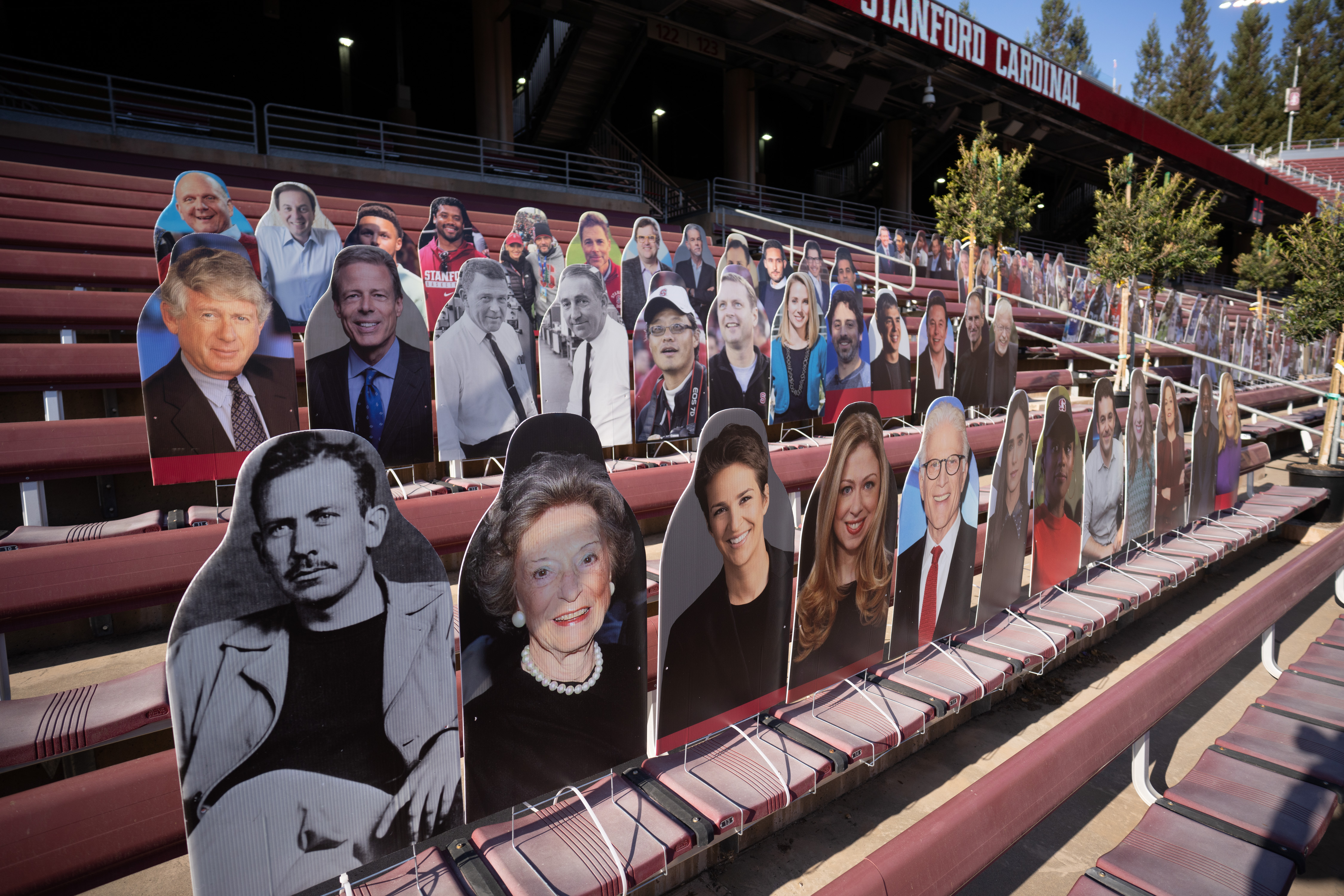Stanford Athletics plans to welcome fans back on campus for events in the fall with no capacity limits, the department announced on June 29.
Stanford Football is slated to play its first home game on The Farm against UCLA on Sept. 25 in front of a crowd of up to 50,000 people at Stanford Stadium — the stadium’s full occupancy.
The University permitted only 25% capacity at select outdoor venues, including Sunken Diamond and Stanford Stadium, this past year. The decision to remove capacity limits in the Fall of 2021 will be a shift from last November, when Stanford Football placed around 420 trees and cardboard cut-outs of alumni and team supporters on the stands to fill the empty seats.
During the 2020-21 academic year, Stanford brought athletic teams back to campus using a phased approach while adhering to COVID-19 regulations. As public health conditions continued to improve, state and local mandates got rolled back, allowing Stanford to resume more normal operations and eventually allowing for fans to return in limited fashion to Stanford Stadium.
Football head coach David Shaw told GoStanford that his team is excited to be back at the stadium this season to play in front of a full crowd of students and alumni, and is looking forward to the team proving themselves with one of the most demanding schedules in the nation.
Fans also anticipate that tailgating will be permitted.
“After a prolonged closure and strict regulations, I think we’re finally seeing the positive results,” Nora Brew ’24, a fan of the football team, said.
Brew added that the decision to remove capacity limits is “tremendously exciting” and that, like most other fans, she is not apprehensive about the games resuming — vaccination rates in the surrounding area are high and cases are staying low.
The return of sports games to campus is not only great for fans, Brew said, but also “a great way to celebrate the Stanford community.”
Echoing Brew, Willys DeVoll ’13 said that watching games on TV can never emulate the live experience.
“When you’re watching a sporting event on TV and you can hear the echoes throughout the stadium because there are no fans there, it diminishes your enthusiasm for it,” he said.
DeVoll added that he is hopeful that the return of home-field advantage will be beneficial to the teams.
Brian Swenson ’13 explained that using sports as an incentive for getting vaccinated against COVID-19 could be an interesting proposal.
“Being able to attend sporting events by showing your vaccination card is somehow conducive to getting people who have some vaccine hesitancy to get to the other side of the fence and determine that they want it,” he said.
Specific health and safety protocols for each athletic event will be determined at a later date, but they will follow all state and local guidelines.
